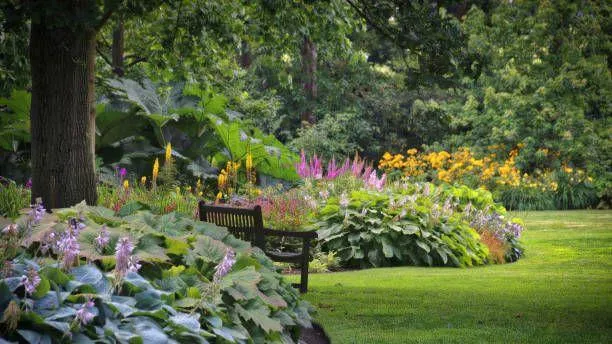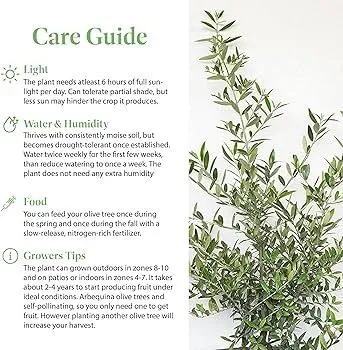Top Trees for Your Home That Thrive Without Direct Sunlight
If you have shady areas around your home where not much grows, you may be looking for tree varieties that can withstand low-light conditions. From my experience as a gardener, there are several excellent options for trees that don’t demand a lot of direct sunlight. In this article, I’ll discuss 10 top picks for trees that will grow and flourish even in partially shaded spots.
Serviceberry
Serviceberry (Amelanchier species) is one of the most versatile small trees for landscapes. The types grow 10 to 20 feet tall and wide, with attractive bark and lovely spring flowers. Serviceberries tolerate part shade very well and need only about six hours of direct sun daily. They flourish in spots getting morning or afternoon light but remain shaded during the hottest part of the day. Their white blooms in early spring are a beautiful sight. Later, they bear small edible berries and vibrant red fall foliage. Serviceberry requires little care and is drought tolerant once established.
Hawthorn
Hawthorns (Crataegus species) come in many varieties for different growing conditions. Most hawthorns succeed in partial shade, handling six hours or less of direct sun every day. They grow 20 to 30 feet tall and wide. One of the best aspects is their incredible ornamental value – hawthorns bear fragrant white or pink spring flowers and bright red berries in fall. The tree bark and branches also have attractive patterns. Hawthorns thrive in average, well-draining soil. Their tough root systems make them resistant to many pests and diseases as well.
Crape Myrtle
Although often thought of as a sun-lover, crape myrtle (Lagerstroemia indica) varieties have been developed that succeed nicely with just a few hours of morning sun each day. They reach 15 to 30 feet tall. Crape myrtles dazzle in summer with clusters of vibrant pink, red, purple or white blooms. Most varieties require little pruning to maintain an attractive form. These trees occupy little space and can take dry conditions once established. If the filtered shade is not too dense, crape myrtles add fantastic seasonal color without demanding full sun exposure.

Redbud
Eastern redbud (Cercis canadensis) makes a nice small tree for yards, growing 15 to 25 feet tall. This native tree thrives in partial shade, handling six hours or less per day. In spring, its branches become covered with rosy-pink pea-like blooms. Heart-shaped foliage provides shade throughout summer. Redbuds grow quickly and tolerate various soil types when moisture is adequate. Their low maintenance requirements make them a sensible choice for shady spots needing greenery.
-
Purpleleaf Plum
-
Flowering Dogwood
-
Russian Olive
-
River Birch
Purpleleaf plum (Prunus cerasifera) earns its name from the lovely burgundy-toned leaves it bears all season. This smalltree reaches 15 to 20 feet tall. It succeeds in locations receiving three to six hours of direct sun daily. In spring, clusters of fragrant white flowers appear. Birds enjoy the plum-like fruit in summer. The bark and twigs also have an attractive red or purple tint in winter. Purpleleaf plum withstands heat, drought, and urban conditions very well once established.
Flowering dogwood (Cornus florida) makes a superb small tree for yards at 20 to 30 feet tall. While it flowersearly spring, dogwoods thrive with partial shade throughout the day – about six hours of sun max. Their flat-topped white, pink, or red blooms are a heralded sign of warmer weather’s arrival. Later, foliage turns a luminous red in fall. Dogwoods succeed in average, well-draining soil with occasional summer watering once established. They bring outstanding natural beauty to shaded landscapes.
The Russian olive tree (Elaeagnus angustifolia) has earned a bad reputation for invasiveness in some regions. However, it stays well-behaved in landscapes when pruned and grown from nursery stock. Russian olive survives with just three to six hours of direct sun daily as it matures 20 to 30 feet tall and wide. Leathery dark green leaves stay on throughout winter. Silvery bark adds winter interest. Its dense, rounded canopy provides habitat for wildlife as well.

River birch (Betula nigra) charms with its exfoliating rose, gray, and cream bark. It grows fast at 40 to 60 feet tall but also prunes up small. This native tree succeeds in spots receiving four to six hours of full sun per day. During warm months, clouds of catkins dangle from branches. Yellow fall foliage puts on quite a show too. River birch tolerates wetter soils well and withstands urban conditions like pollution with resilience. It’s quite a striking choice for partially shaded areas.
Whether you need a small accent tree or medium-sized shade provider, the options above should suit spots in your landscape receiving minimal direct sun exposure. By selecting trees adapted to lower-light demands, you gain greenery without losing valuable growing space. With minimalcare once established, these varieties will grow attractively for many years, enhancing patios, yards or other partially shaded sections of your property.
So in summary, serviceberry, hawthorn, crape myrtle, redbud, purpleleaf plum, flowering dogwood, Russian olive and river birch represent top picks for trees that thrive with far less than full sun exposure. Their natural beauty, low maintenance needs and adaptability make them sensible choices where light conditions are more limited. I hope this guide to trees tolerating partial shade gives you some wonderful ideas for sites needing coverage but lacking optimal sun levels.
Please feel free to ask me any other questions! I’ve enjoyed conversing about plant selection, and I’m here to continue discussing ideas for improving landscapes while staying within environmental constraints. With careful consideration of sun tolerance and needs, it’s quite possible to develop lovely gardens even in the trickiest spots. Finding the right balance takes some trial and error, but usually people can work around limitations and still achieve satisfying results.

Houseplants That Thrive Without Direct Sunlight
| Plant | Light Level Needed | Care Tips |
|---|---|---|
| ZZ plant | Low to medium light | Water when soil is dry; tolerates low humidity |
| Peace lily | Low to medium light | Water when soil is dry; thrives in humid rooms |
| Spider plant | Low to bright indirect light | Propagates easily from plantlets; tolerates neglect |
| Pothos | Low to medium light | Will vine if given support; tolerate dry conditions |
| Philodendron | Low to medium light | Variety of types for different light levels; tolerant of neglect |
FAQ
-
What house trees don’t need very much light?
Some house trees that can survive in fairly dim light include snake plants, pothos plants, Chinese evergreens, and ZZ plants. At the same time, spider plants and peace lilies also do well in low-light conditions.
-
Do any house trees flourish without direct sunlight?
Despite getting little to no direct sunlight, there are some plant varieties that can still grow well indoors. Snake plants, also called mother-in-law’s tongue, are quite hardy and can grow healthily with just ambient light from a window. Chinese evergreens also don’t need much sunlight to look their best. However, these plants may grow slower without some sunlight each day.
-
Which tree varieties can tolerate very low light?
Probably the all-star champion of low-light house trees is the ZZ plant. Botanical name Zamioculcas zamiifolia, this plant can hang out in super dim lighting and basically just be chill about it. Spider plants are another strong contender. They kind of multiply like crazy too, so you’ll have lots of them in no time! The pothos vine, or devil’s ivy, also endures low light pretty well in my experience.
-
How much sunlight do peace lilies require indoors?
Peace lilies, or Spathiphyllum, are strong candidates for low-light houseplants. They thrive in medium to low light and can tolerate pretty dim conditions. As little as four to six hours of indirect sunlight per day seems to make peace lilies happy. However, they may grow larger or bloom more often if they get brighter light. So, a spot just outside a window can be perfect. Peace lilies will let you know if they need more light by looking paler or less vibrant.

-
Can snake plants tolerate very dim indoor lighting?
Yes indeed, snake plants named for their long, snake-like green leaves can manage in some pretty poor lighting. They undergo a process called crassulacean acid metabolism that allows them to get by on very little light. Some gardening experts say snake plants can survive with only afternoon light from a window facing west for an hour or two per day. So if you have a dark apartment, snake plants could be an awesome choice for your indoor greenery!
-
What’s the lowest light houseplant that looks nice?
If you’re looking for an attractive low-light houseplant to brighten up a shady spot, consider the Chinese evergreen. Although it grows more gradually without tons of sunshine, this tree-like plant comes in many different colorful leaf varieties and holds its shape well even in dim indoor conditions. It’s sometimes called the “hardiest” plant for low light. Chinese evergreens may even sprout small white flowers on occasion! Not bad for very little light, if you ask me.
-
Are any popular houseplants truly low-maintenance for light?
When it comes to houseplants that thrive with minimal light as well as care, snake plants and pothos vines seem to top most experts’ lists. They really can survive in quite dim indoor lighting, sometimes just a window that gets afternoon sunlight. And they don’t need constant watering either. Just keep the soil slightly moist. These plants prove that you can still brighten your home with greenery even if you’re really bad at remembering to water plants! As long as there’s a bit of light, snake plants and pothos will hang on.
